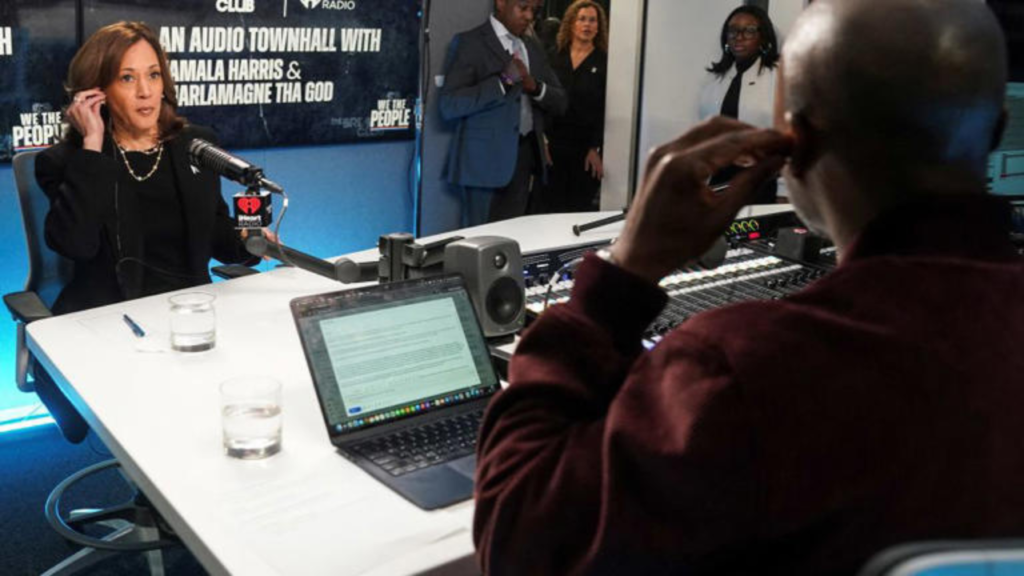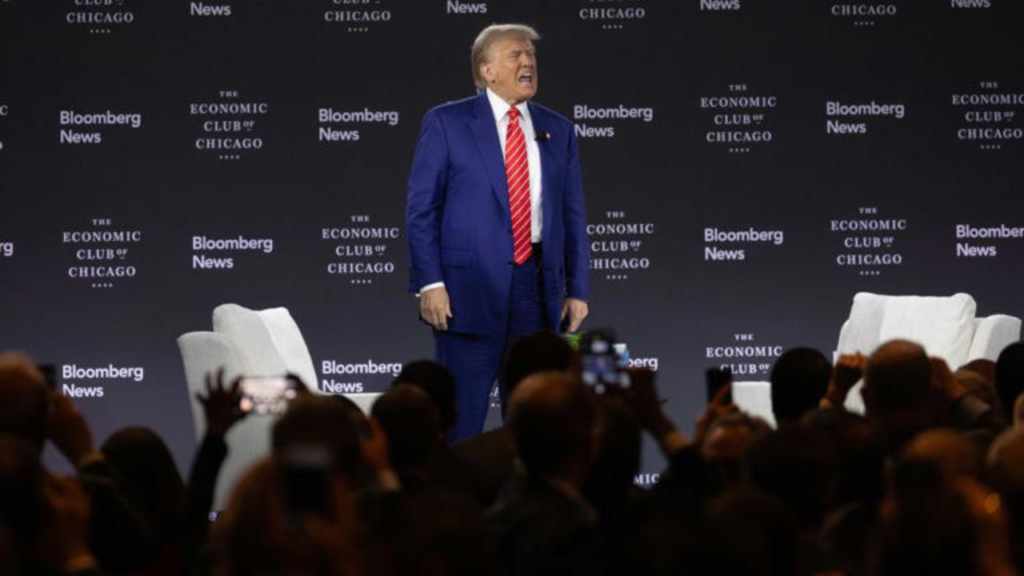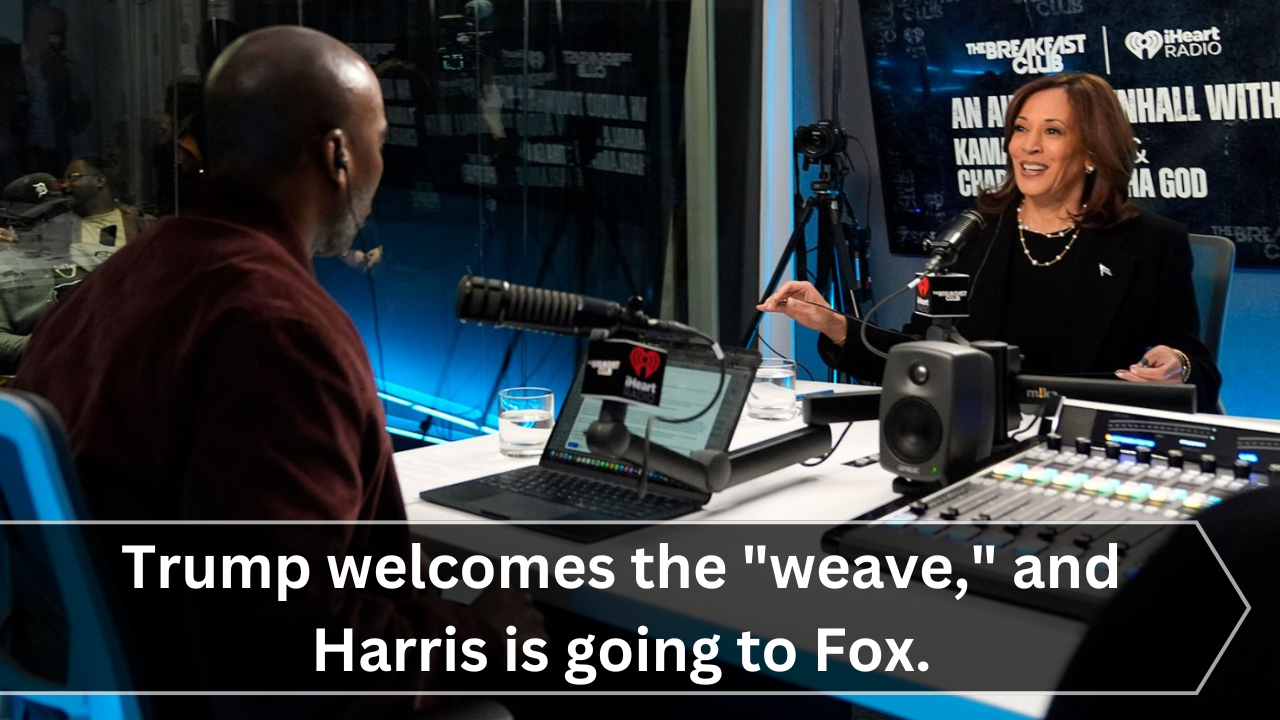Introduction
In this world of the 2024 election, media presence marks the future of how people might believe candidates. They are smart enough to understand that using the media effectively can change voter opinions and even lead to an election victory.
- Equally important as using the right amount of money is having an effective strategy in place. In his attempt to make things different, Donald Trump employs a strategy known as the ‘weave’. This new approach specifically targets strengthening his campaign’s message in all the significant swing states to become more attractive to different groups of voters.
- On the other side, Kamala Harris very discriminately takes the mainstream media appearances on popular Fox News to answer personal attacks and elaborate policy proposals.
Both of them are trying to implement these strategies in order to connect with the voters and face the intricate landscape of modern political campaigning. Which strategies is Trump and Harris using, so that each of them has a healthy showing on Election Day?.
Trump’s Campaign Strategy: Embracing the Weave
Donald Trump is strategically targeting battleground states like Wisconsin as he steps up his campaign. In this close race, it is essential to win electoral votes where he needs to. There has also been recent endorsement by Robert F. Kennedy Jr., who put his independent presidential run on hold to throw his backing behind Trump. This could again provide his campaign with much-needed heft: Just last year, Kennedy campaigned among Hispanic voters.
Economic Messaging
The message of Trump is largely dominated by issues of economy, which resonate well with his supporters amidst rising voter anxiety regarding the health of the economy. Among the most salient aspects of this strategy are:
- Tax Initiatives: Trump has revived talk of tax cuts supposed to benefit the rich in an attempt to establish himself as a guardian of profligacy in fiscal policy.
- Economic Revitalization: He speaks of job creation and efforts at deregulation, which he claims should be at the core of managing the economy.
These points not only dovetail with what the base wants but also silence some of the criticism that came in from his first term on how he handled the economy.
The Weave Strategy Defined
The ‘weave’ is a multi-faceted campaign strategy, wherein multiple strands of campaigning, policy proposal, and media engagement are weaved together. It consists of the following elements:
- Message Integration : Integration of personal narratives with broader political themes aims at giving a cohesive storyline to appeal to voters.
- Connection to Project 2025: The ‘weave’ directly connects to Project 2025, a plan which describes future policy recommendations based on conservative priorities.
By embracing this tactic, Trump seeks to fortify his storyline while simultaneously working to assuage the political grievances that plague his story. The ‘weave’ is as much a campaign tactic as it is a way of enhancing engagement with voters to be heard and represented in crucial national conversations.
Kamala Harris’s Media Engagements: Navigating Public Perception

A string of interviews with prominent media outlets Kamala Harris has managed to use to counter attacks on a personal level and to define her positions on policies. It is there-mostly on shows such as The View and the podcast Call Her Daddy-that she has most convincingly executed this maneuver. These media appearances are not only defensive measures against personal intrusions but also serve to improve her public persona and appeal to voters.
Countering Personal Attacks
Harris has received criticism after criticism about her personal life, starting with the simple fact that she does not bear biological children. Being on such popular shows and podcasts continues to make an attempt at humanizing her and keeping a more personal grasp on the audience.
Highlighting Policy Views
In these interviews, Harris has managed to lead the conversation to great extents concerning statement on the urgent issues, especially the issue of abortion rights. It allows her straight reply to the GOP criticism and get prominence for reproductive rights, which is the heart of the story of her strategy.
All these attempts put forward the importance of media presence as Harris can work on complex political narratives and pursue attention towards core electoral issues.
Media’s Role in Shaping Public Opinion
One area where the media present Donald Trump and Kamala Harris involves presenting them with symbolic packaging; this is because that depiction will affect the way the public views them nearer to election time. The media has criticized each of the candidates for various reasons; the New York Times and Politico are leading stories that shape how the voters think about the candidates.
Donald Trump’s Media Coverage
For instance, the media reminds everyone that Donald Trump focuses on the swing states and issues of the economy. His latest endorsement by Robert F. Kennedy Jr. has been presented as one of the smart moves towards reaching the various voter groups. However, most of the time there is often critical review of his economic plans and policy stances.
Kamala Harris’ Media Strategy
Meanwhile, Kamala Harris is pushing back with personal attacks through media appearances. She has appeared on shows such as ‘The View’ and podcasts such as ‘Call Her Daddy’, where analysts are able to break down her reactions to criticisms from Republicans and her pro-abortion views. Through these interviews, how keen she is on further polishing up her image, albeit with highly varied coverage from most major news outlets, is visible.
The Double-Edged Sword of Media Coverage
Both Trump and Harris are experiencing the same number of media stories that are either helping or hurting their campaigns at the same time. This intricate storyline highlights how media coverage can impact public perception on moving toward Election Day.
Controversies, Misinformation Claims, and Policy Comparisons: Trump vs. Harris

Both Donald Trump and Kamala Harris have faced election day amidst controversies over claims of misinformation. All the candidates have been involved in claims that incited public debate and media controversies.
Controversial Claims and Misinformation
- The latest development is regarding allegations of spreading information which Donald Trump has also faced about FEMA aid, which critics claim often overstates the reach and impact of the aid, causing voter confusion.
- Kamala Harris has faced personal attacks over her mental state and her position in an administration. These attacks question her integrity as a vice presidential candidate.
Key Policy Positions
There are policy areas where both Trump and Harris differ in relation to their differing political ideologies.
Abortion Rights
Abortion rights has been the keystone of her campaign messaging. She continues to say she will protect the right to reproduce as a defining voting issue against the stances positioned by Trump as ultraconservative.
Economic Policies
His attention remains riveted on economics-more specifically, tax plans for the rich-and his campaign maintains these policies will spur economic growth and assist working-class Americans. He is betting voters are anxious about economic uncertainty.
Political Unity
The candidates air both starkly different positions when each endorses being a unifying figure that can heal the fracture within their parties. For example, Trump’s endorsement from Robert F. Kennedy Jr. is an attempt at reaching wider boundaries beyond the traditional Republican boundaries. On the other hand, Harris’s media engagements are an attempt to correct her past liabilities as well as stiffen her resolve towards democratic values.
It is that interplay of controversies, misinformation claims, and policy positions that shapes public perceptions and informs the voters as Election Day approaches. Both candidates are modifying their strategies to take account of these changing fortunes in a very fast-changing political landscape.
What It Means for the Democratic Party: How Biden’s Successes Impact Harris’s Campaign

Before the decisive elections, the DNC will strategize and prepare to have a forceful voice on democratic values. With the change of political wind, the DNC is well-equipped to capitalize on the success story of President Biden for inclusion in the election manifesto of Kamala Harris.
Biden’s Achievements
- Economic Recovery: Since the pandemic, the Biden administration has led through steady economic recovery by pointing the focus on job growth and low unemployment.
- Infrastructure Investments: The significant infrastructural investments have started with promises of a change for the good in the long run and jobs for people.
- Healthcare Advancements: The accessibility of healthcare and its affordability continues to be underlined.
Kamala Harris has skillfully wove these success stories into her campaign story. She addresses abortion rights, amongst other crucial issues while relating well to Biden’s projects. Thus, she becomes more credible and appealing to voters who would want to have a continuity of good changes in policies.
Whereas other news details of the Democratic National Convention have become grassroots oriented by taking on the online stage with voter concern straight on, what seems to be a momentous election day, any strategic alignment that the DNC does with Harris’s message and Biden’s accomplishments could make all the difference as persuaders for undecided voters in strengthening party unity.
Read more :- Suzanne Passe Found Michael Jackson’s Superstar Potential Before His Brothers
Conclusion
political landscape of America in 2016 is largely dependent on the media presence wherein communications between candidates and voters are utilized.
- But embracing the ‘weave’ strategy brings in the buck in favour of Trump from battleground states. The economic messaging stands well as it now has dialogues with his base.
- Harris on Fox and ‘Call Her Daddy’: Harris seems to be countering the GOP criticisms in one of these ways, as she is pushing her stance on abortion rights.
In the countdown to Election Day, expect both candidates to have intensified media narratives. Though each candidate will use different strategies, there is no doubt that the role of the media in elections remains vital. Voter involvement will probably depend on an ability to use those avenues and public perceptions skilfully. The dynamics now unfolding are set to make every interview and endorsement count into election day.
FAQs
What is the significance of media presence in shaping public perception during elections?
Media presence is an imperative force influencing public perception during elections by how the candidates are portrayed and understood by voters. In short, media presence can make the messages loudest, disprove myths, and usher forth the issues that resonate with the electorate.
What does Trump’s ‘weave’ strategy entail?
Trump is to focus much on the battleground states. His approach also is very unique in campaign messaging-he weaves together so many policy proposals and endorsements. So, it is the weave that will build a coherent story meant to appeal to voters on all these economic matters and tax plans aimed at the rich.
How has Kamala Harris utilized media engagements to address criticisms?
Kamala Harris is actively reaching out to high-profile media outlets, such as the popular morning talk show ‘The View’ and the popular podcast ‘Call Her Daddy’, where she may be able to pre-empt personal attacks and deliver her policy prescriptions, particularly around some of those contentious matters, like abortion rights. Those appearances put her in direct communication with voters, helping shift the narratives of her candidacy.
What are some key comparisons between Trump and Harris in terms of their campaign strategies?
Both Trump and Harris are criticized by the media, which shapes public opinion. Trump hits all the right notes by speaking on economic issues and focusing on battleground states, while Harris speaks on criticism from the GOP by appearing in targeted media programs. Their strategies reflect two different approaches to voter outreach and issue prioritization.

